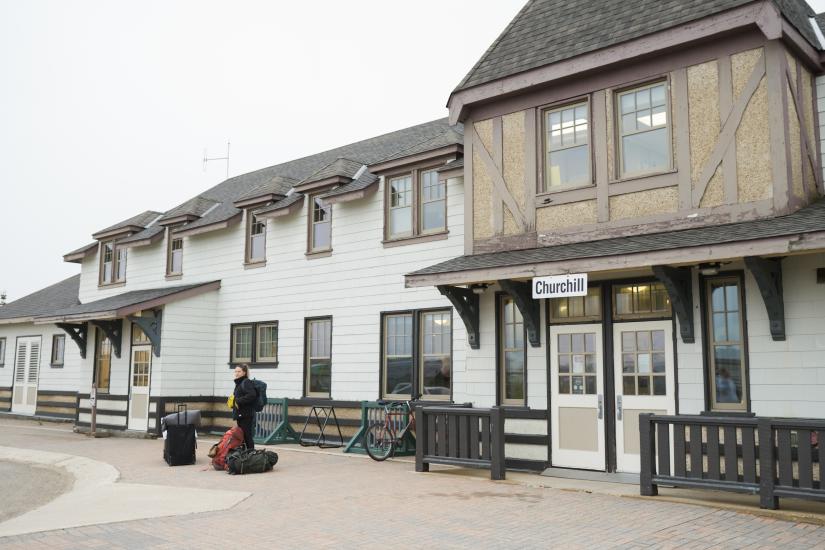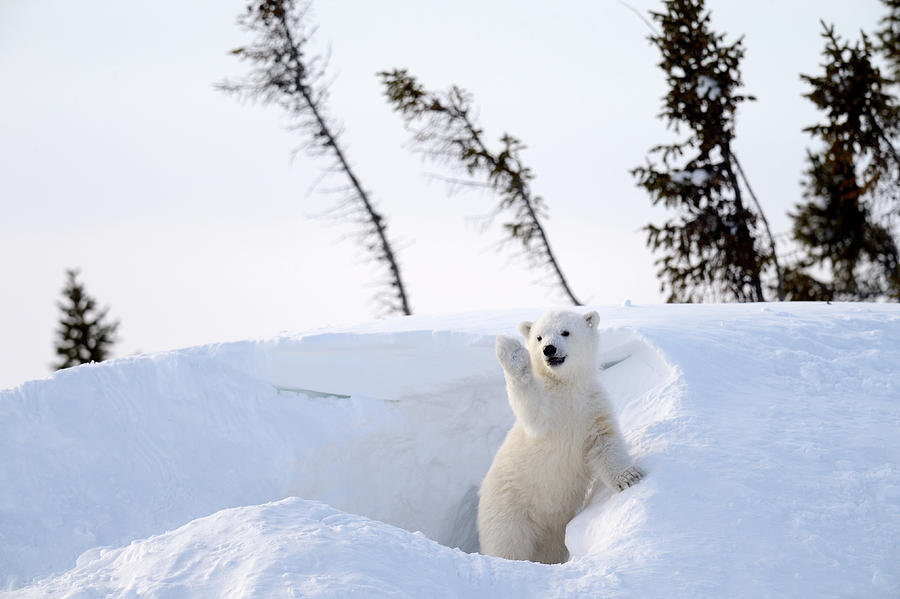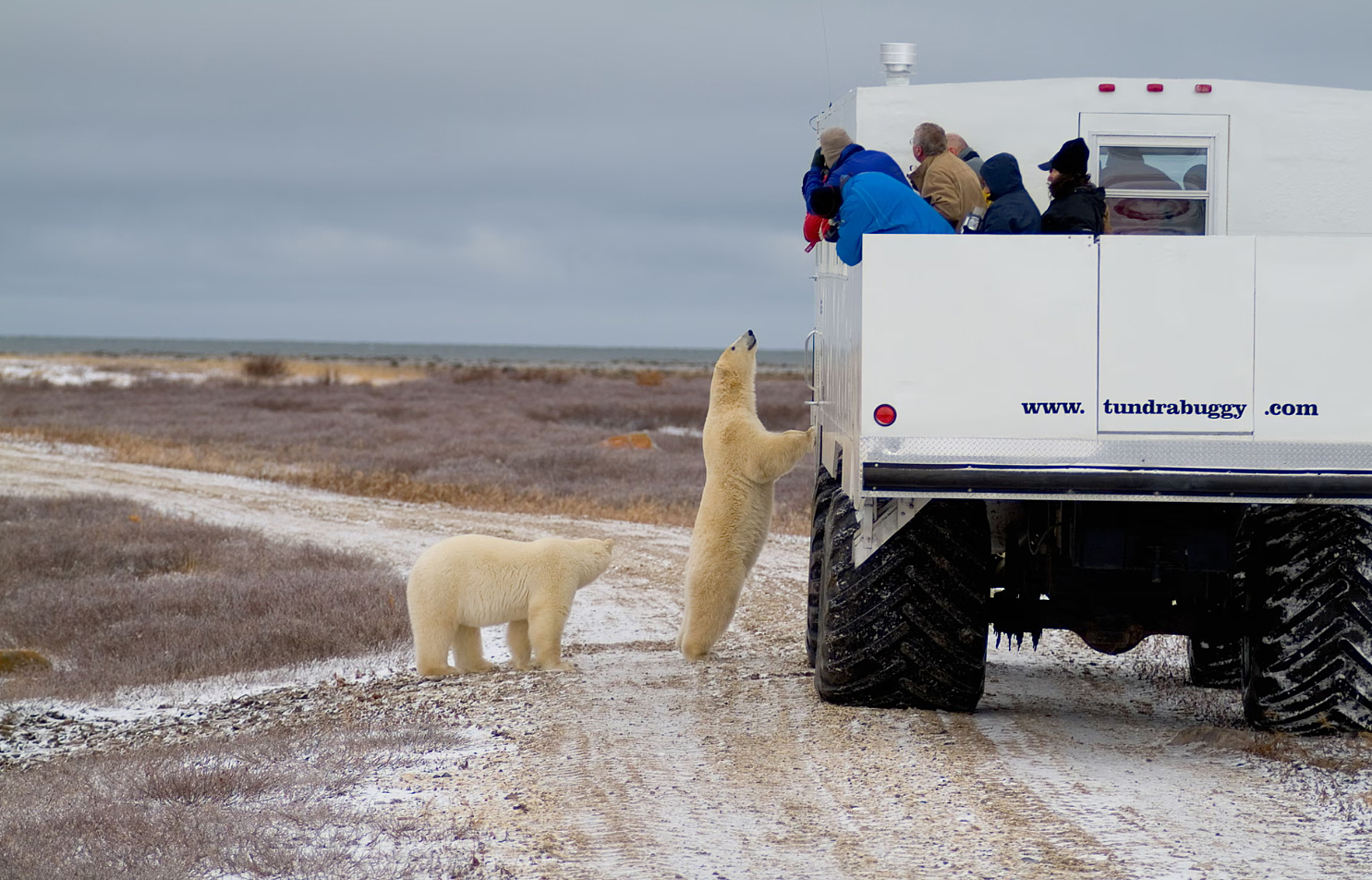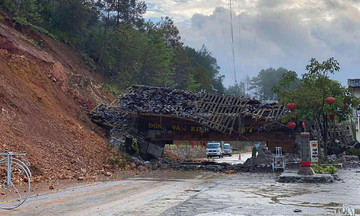Located 1,000 km north of Winnipeg on the shores of Hudson Bay, Churchill is one of the world's most remote settlements. But isolation and extreme cold aren't the biggest fears for its nearly 900 residents. Their constant threat comes from half-ton neighbors: polar bears.
Churchill lies on the annual migration route of the world's largest polar bear population. As the ice forms in autumn, the bears travel along the coast to Hudson Bay to hunt seals. Year-round, bears linger at the town's edge, sometimes straying into residential areas, creating unease among residents.
"Every time I go out, I feel anxious," one resident told The Atlantic. "Sometimes, in the morning, I see fresh tracks in the snow and realize a bear has passed through our neighborhood," another said. Residents of nearby Winnipeg often recognize people from Churchill by their habit of cautiously scanning street corners.
 |
A street corner in Churchill. Photo: Travel Manitoba |
A street corner in Churchill. Photo: Travel Manitoba
Life in Churchill demands constant vigilance. Warning signs are everywhere, reminding people to stay within town limits and avoid known bear areas. Residents keep their homes and cars unlocked, providing quick access for anyone needing a safe haven during a surprise encounter.
Visitors to Churchill are regaled with thrilling polar bear tales. One person described hearing a noise while indoors, pulling back the curtains, and finding a massive bear staring through the window. Another visitor, about to walk a few hundred meters from a restaurant to his hotel at night, was luckily warned about a pair of polar bears waiting across the street. One elderly man, walking past a curious bear observing him from behind a rock, simply muttered, "If it gets me, it's my fate."
In the past, bears wandering into town were often shot, but this only worsened the conflict. Since the 1970s, Churchill has implemented the Polar Bear Alert Program.
Whenever a bear is sighted, a call is made to a hotline. Staff use flares and rubber bullets to deter the animals. If these methods fail, the bear is tranquilized and taken to a holding facility known as the "polar bear jail"—the world's only jail specifically for polar bears.
 |
A polar bear plays in the snow in Churchill. Photo: Fine art America |
A polar bear plays in the snow in Churchill. Photo: Fine art America
Housed in a former aircraft hangar, the facility contains several 3.5 x 5-meter cells. Bears are held for a maximum of 30 days, given only snow and water to discourage them from returning to town for food. Bears can fast for extended periods, so they don't starve, but the experience is certainly unpleasant.
"We don't want them to be comfortable. We want them to not want to come back," explained Brett Whitlock, the regional conservation supervisor for Churchill. He emphasizes that it isn't punishment; the goal is to protect the bears from being killed after causing harm. "We call it a holding facility, not a jail," he said.
Upon release, bears are again tranquilized, transported by helicopter to a remote location, and tagged for monitoring. "Repeat offenders" can be held for longer than 30 days. Bears too young, too old, or unable to survive in the wild are transferred to the Assiniboine Park Zoo in Winnipeg.
The program receives an average of 300 calls per year, with about 50 bears being held in the facility.
The Polar Bear Alert Program has significantly reduced conflict. However, it only addresses the immediate problem. A larger, global threat is eroding the fragile balance in Churchill: climate change.
Climate change is causing the ice in Hudson Bay to melt earlier and freeze later, severely shortening the polar bears' seal-hunting season. Unable to accumulate sufficient fat reserves, hungry bears are forced inland to find alternative food sources, such as whale carcasses and even human garbage. This is why more bears are appearing in town.
Studies show that the polar bear population around Churchill has declined by 22% since 1987. Scientists warn that if this trend continues, two-thirds of the global polar bear population could disappear by 2050. By the end of the century, this iconic Arctic animal could face extinction in the wild.
Research shows a bear can lose up to one kg of fat per day during lean times. Many become weak and starve, while survivors produce smaller cubs with lower survival rates.
 |
Polar bears approach a Tundra Buggy to observe tourists in Churchill. Photo: Alamy |
Polar bears approach a Tundra Buggy to observe tourists in Churchill. Photo: Alamy
While the future of the polar bear is increasingly precarious, it is also Churchill's main source of income. The town has turned this danger into a multi-million dollar industry, earning the title of "Polar Bear Capital of the World." Around 800 bears live in the vicinity, and this number can swell to 10,000 during the autumn hunting season.
Thousands of tourists from around the world flock to Churchill each autumn, paying to ride on massive Tundra Buggies that safely take them deep into the wilderness to observe the bears. The very animals that locals try to avoid are the ones tourists eagerly seek.
For over 400 years, polar bear tourism has transformed Churchill from a fur trading post and former military base into the "jewel of Manitoba," one of Canada's top destinations.
Churchill stands at a crossroads. Its economy depends on an animal threatened by the very lifestyle of modern civilization. The future of the town is inextricably linked to the future of the polar bears. Their story is a microcosm, reflecting the complex and paradoxical relationship between humans and the natural world on a warming planet.
Anh Minh (The Guardian, Amusing)












